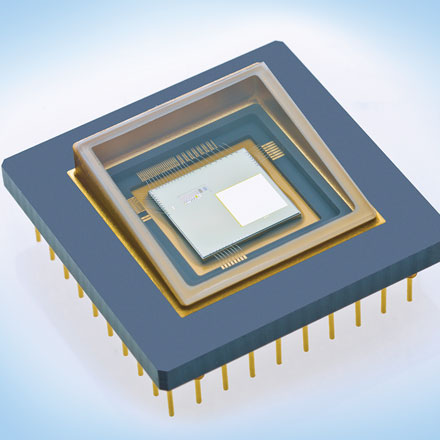|
Wednesday, November 11, 2020 |
|
|
|
Sponsored by
|

|
|

|
Medical diagnosis heavily depends on innovative methods for biomedical imaging. New system concepts that combine miniaturized optical MEMS components, such as scanning mirrors and spatial light modulators, with new methods for realization of passive micro-optics allow for a variety of different new biomedical products. This webinar will describe the technical realization of those systems in more detail, as well as their biomedical applications.
Use of fluorescence microscopy in biomedicine, for example, is often limited by phototoxicity. The cells, tissues, or organoids suffer from heavy illumination so that long-term investigation of biological or medical processes becomes difficult. This limitation can be overcome if only the “region of interest” is illuminated. In addition to the area, the angle of incidence must also be controlled to avoid shadow effects. System designs that realize such a structured illumination with both spatial and angular control of light make use of a pair of MEMS spatial light modulators. These modulators consist of an array of micromirrors with up to several millions of mirrors on one chip. The analog tilting angle of each mirror is individually controlled by an integrated CMOS ASIC.
Other recent developments covered in this webinar include a very compact confocal laser scanning fluorescence microscope that allows for instant detection of malignant cells during tumor resection, as well as an ultraflat microscope that can be integrated into lab-on-chip applications. Those system designs also rely on special optical MEMS devices or on actuation of a lightweight micro-optics by MEMS device. This webinar will provide a full overview and will conclude with a Q&A session.
Who should attend:
Students and professionals alike whose work or research involves biomedical imaging and who are interested in new system designs for imaging technology. This overview by an expert in the field will provide valuable insight into the challenges and solutions for medical diagnoses.
About the presenter:
Michael Scholles, Ph.D., is the head of the Fraunhofer Project Hub, Microelectronic and Optical Systems for Biomedicine (MEOS), in Erfurt, Germany. He has almost 30 years of experience in R&D for electronic and photonic systems. Previously, he was responsible for business development and strategy and had other management positions at the Fraunhofer Institute for Photonic Microsystems Dresden, which is one of the three Fraunhofer Institutes that operate the Project Hub MEOS. He has a dipl.-ing. and a doctoral degree in electrical engineering, both from Gerhard Mercator University of Duisburg in Germany.
This webinar is sponsored by Meadowlark Optics Inc. Meadowlark Optics designs, develops and manufactures standard and high-speed Liquid Crystal on Silicon Spatial Light Modulators for both phase and amplitude applications. High resolution, analog backplanes coupled with fast liquid crystal response times produce very stable phase patterns up to 422 Hzm – such as the 1920x1152 SLM, which was designed with high power applications in mind and includes a built-in heat sync and optional cooling system for use up to 400 W/cm2 average power density. Other standard products include polarizers, waveplates, tunable optical filters and liquid crystal rotators and variable retarders.
|
|
|
|
Date: Thursday, November 12, 2020
Time: 10:00 AM - 11:00 AM EST
Space is limited. Reserve your Webinar seat now at: https://attendee.gotowebinar.com/register/9117402615244145933
After registering you will receive a confirmation email containing information about joining the Webinar.
|
|
|
SYSTEM REQUIREMENTS
Operating System
Windows® 7 or later, Mac OS® X 10.9 or later, Linux®, Google ChromeTM OS
AndroidTM OS 5 or later, iOS® 10 or later
Web Browser
Google ChromeTM (most recent 2 versions)
Mozilla Firefox® (most recent 2 versions)
Mobile Devices
AndroidTM 5 or later
iPhone® 4S or later
iPad® 2 or later
Windows Phone® 8+, Windows® 8RT+
|
|
|
|
.: More from Photonics Media
|
|
|